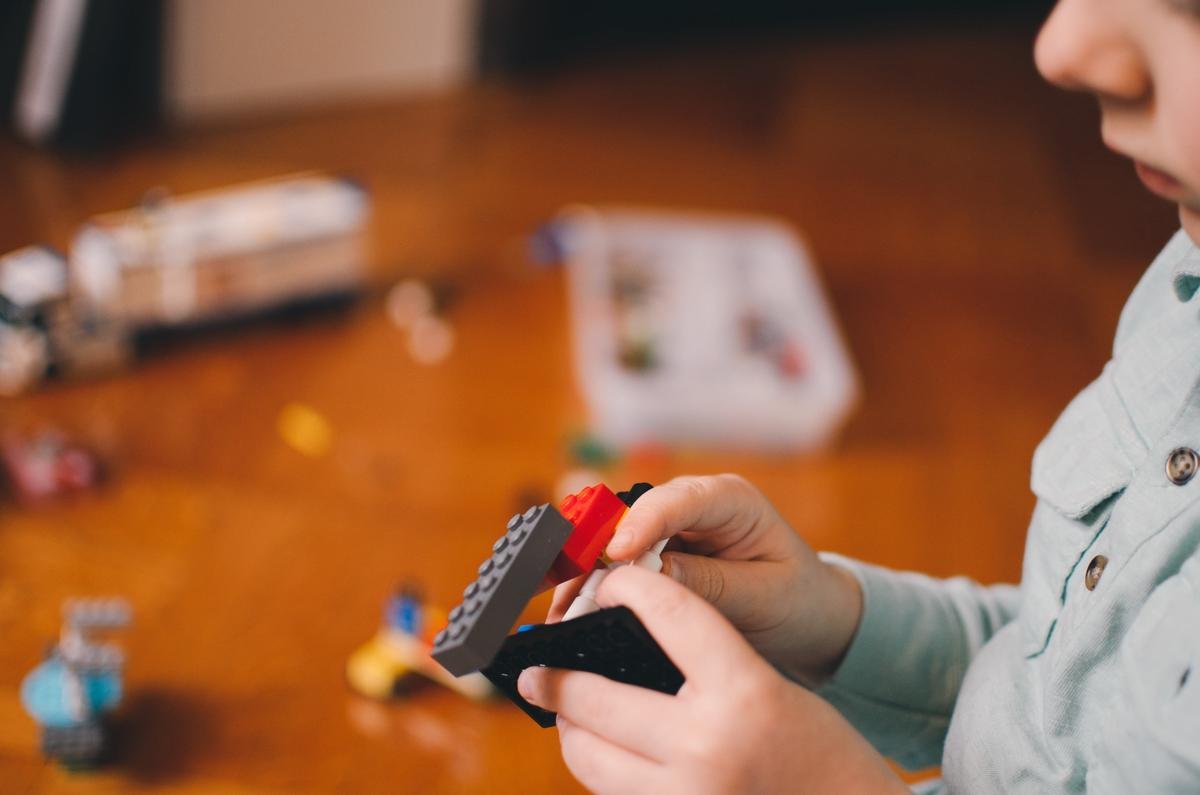
As we navigate through the nuanced world of autism, one aspect that consistently stands out is the occurrence of repetitive behaviors. These behaviors, ranging from hand-flapping to repeating phrases, are intrinsic to Autism Spectrum Disorder (ASD), although the extent and form of the behavior can vary between individuals. This essay shall meticulously explore this critical aspect of autism, shedding light on the principle, techniques, and practical applications of behavioral therapy geared towards managing these repetitive behaviors. Additionally, this discussion will elucidate the indispensable role that parents play in reinforcing these therapeutic techniques and will also detail heartening success stories of managing repetitive behaviors using tailored therapy.
Understanding Autism and Its Repetitive Behaviors
Navigating Repetitive Behaviors in Autism: A Parent’s Guide
Is your little one engaged in actions that seem consistently patterned and repetitive? If you’ve noticed a marked trend towards certain types of behaviors, it may be related to autism. Repetitive behaviors are one of the common traits associated with Autism Spectrum Disorder (ASD). As a passionate about parenting and providing the best possible environment for children, let’s delve into some of the most common repetitive behaviors.
- Echolalia:
- Hand Flapping and Rocking:
- Specific Routines:
- Sensory Obsessions:
- Lining up Objects:
Echolalia is one common sign of autism, where a child repeats words or phrases they hear. While it’s normal for youngsters to mimic what adults say, children with autism might parrot phrases without necessarily understanding their meaning. If you notice this trend in your child, a professional consultation could be beneficial.
Many children on the spectrum demonstrate repetitive movements like hand flapping, rocking back and forth, or spinning. While some of these movements can be fairly harmless, it’s essential to carefully monitor them to avoid instances of self-harm or disruptions to daily activities.
Family routine can provide comfort and predictability for kids with autism. However, a child with autism disorder may display an extreme attachment to routines, becoming anxious or upset when even minor changes occur. As a parent, maintaining an atmosphere of calm and consistency can help manage these situations.
Children with autism may have specific sensory obsessions – like enjoying the texture of certain materials, or entranced by certain sights or sounds. Embrace your child’s sensory preferences and provide opportunities to explore these in a safe and manageable way.
Many kids with autism may line up their toys or other objects in a specific order, often by size, color, or shape. If you notice this behavior, it might be a method for your child to create order in their world. Accommodate this desire for order in their everyday environment, while introducing minor variations to help them adapt to change.
Understanding these repetitive behaviors can provide valuable insights into your child’s world. Remember, every child is unique, and these behaviors are just one aspect of their complex personalities. Therefore, these behaviors should not be seen as deficits, but rather as unique ways in which children with autism interact with and experience their world. Embrace their differences, while scaffolding their growth and development in a safe and loving environment.
A strong support system, professional guidance, and your boundless love are crucial tools to help your child. Autism doesn’t define your little one – it’s just one part of their multifaceted personality. With love, understanding, and patience, their unique ways of experiencing the world could turn out to be their superpower!

Introduction to Behavioral Therapy for Autism
Unlocking Improvement: Behavioral Therapy and Autism
Each child with autism is unique, sporting a unique personality and exhibiting distinct repetitive behaviors that are inextricably woven into the fabric of their identity. As caregivers, the journey demands a constant and loving embrace of these distinctive quirks, an understanding balance to ensure comfort while gently guiding towards potential growth areas. One such approach that has shown considerable promise is Behavioral Therapy, particularly in the management of repetitive behaviors in autism.
Behavioral Therapy is a time-tested technique that allows children with autism to learn how to manage their behaviors themselves, primarily through positive reinforcement. Applied Behavior Analysis (ABA), a well-known branch of this therapy, adopts a systematic process to understand why a behavior is being repeated and how it can be improved.
The therapy involves observing the child in their respective environments and noting their responses to certain stimuli. These insights facilitate the development of strategies that work best for the child, enhancing their skills and ability to function effectively. It is designed to empower children, encouraging them to actively contribute to their own growth.
For children who find gratification in rigorous routines, ABA can provide the framework needed to infuse flexibility into these structures without causing distress. By introducing gradual changes and positively reinforcing acceptance, we make room for them to adapt to life’s often unpredictable nature, without feeling overwhelmed.
Incorporating Behavioral Therapy can also help in the management of sensory obsessions. Therapists can design sensory-rich activities that recognize the child’s preferences, but present them in a more varied or controlled fashion. Over time, these adjusted experiences may lower the intensity of the obsessions, offering a comfortable exploration of different sensory experiences.
The meticulous nature of children with autism, often represented in lining up objects or tasks, can be steered towards constructive ends. Behavioral Therapy can help to expand this habit into categorization or sorting activities, thereby promoting learning and valuable life skills.
A significant aspect of managing repetitive behaviors through Behavioral Therapy is fostering resilience and patience. Incremental progress might seem slow but every small step is a milestone towards enhancing your child’s quality of life. Timely consultations with therapy experts will ensure your journey is well-guided, and your patience will always be your child’s biggest source of support and motivation.
Embracing Behavioral Therapy can help in tailoring a unique treatment plan and pave the way for a holistic development approach for children with autism. The process won’t eliminate unique personality traits, but rather, direct them to embrace a more rounded, confident skill set. It gifts them the tools for growth and independence, while also maintaining respect for who they are as individuals.

Role of Parents in Behavioral Therapy for Repetitive Behaviors
Helping children with autism enhance their abilities to navigate the world holds a promise so incredible, that it is impossible to overstate. The decisions made, the steps taken in early childhood can adjust the trajectory of a child’s life, opening up endless potential for growth and happiness. One pivotal tool in unlocking this potential is Behavioral Therapy, including Applied Behavior Analysis (ABA). These strategies deploy a precision approach to enhance behaviors, all the while valuing the individuality of each child.
While there’s a wealth of information available about various aspects of autism, the concept of Behavioral Therapy often throws parents into a tailspin of confusion. Loosely defined, it encompasses structured interventions that aim to decrease problematic behaviors and increase socially significant behaviors. ABA plays a substantial role in this, leveraging principles of learning theory to help children understand how their actions impact their environment.
To make the most out of this therapy, parents play a cardinal role. Observing and understanding a child’s responses to stimuli forms the backbone of individualized strategies. The emphasis is on accelerating learning and promoting independence. The key here is that these strategies respect and respond to the distinctive nature of each child’s behavior while helping them evolve.
One of the sectors where Behavioral Therapy shines is in managing the inescapable attachment to routines seen in individuals with autism. ABA algorithms introduce flexibility in these rigid routines. It is a transition that needs to be approached with utmost sensitivity as not to distress the child.
Sensory obsessions, another prevalent aspect in children with autism, can be managed smartly with Behavioral Therapy. Adjusted and controlled sensory experiences can lessen the overwhelming nature of these obsessions while still accepting and accommodating them. It’s about finding and maintaining that delicate balance.
A brilliant stride can also be taken towards redirecting meticulous habits like lining up objects. From this behavior, one could slowly introduce the child to engaging activities like categorization and sorting, making their habits constructive and more socially relevant.
Vital qualities such as resilience and patience often see the light of day with Behavioral Therapy practices. The process fosters a level of acceptance within the individual, an understanding that there are numerous ways to interact with the world around them.
Choosing Behavioral Therapy is not a journey that parents need, or should, go alone. It is essential to seek consultations with professionals trained in this line of therapy. They can assist in setting up an effective and unique treatment plan suited to each child’s requirements, embarking on a journey towards holistic growth and development.
It’s crucial to remember that the aim of Behavioral Therapy is not to stifle the unique spark that makes these children so extraordinary. Instead, it provides an avenue to enhance their skills, carving a way that supports their growth and independence. The essence of each child is honored and celebrated while equipping them with tools that ease their way through life. While autism presents unique challenges, Behavioral Therapy allows parents to constructively embrace these aspects, capitalizing on their child’s strengths and paving their way to a promising, fulfilling life.

Photo by kellysikkema on Unsplash
Successful Stories of Behavioral Therapy for Autism Repetitive Behaviors
Can Behavioral Therapy Transform Repetitive Autism Behaviors? Let’s Explore Some Success Stories
Working with autism’s distinct behaviors can be a study in gentle persistence, especially when repetitive actions are in the mix. Behavioral therapy has provided many families and children with a beacon of enlightenment in this journey, casting light on their unique situations. Parents, educators, and the children themselves have seen the tangible fruits of these therapy methods, and their success stories stand as a testament to this.
One such powerful narrative comes from Dalton, a child demonstrating intense echolalia, repeating phrases obsessively. When introduced to behavioral therapy, especially Applied Behavior Analysis (ABA), Dalton’s world underwent a significant change. His therapy team systemically recognized his need to repeat phrases and then gently channeled it into interactive dialogue. In time, Dalton was able to communicate his needs better, turning echolalia from a mere repetitive habit into an improved communication tool.
Then there’s the story of Jasmine. Her attachment to routine meant that any disruption led to intense distress. With behavioral therapy, specific ABA principles were brought into the picture to gradually build flexibility into her schedule. Gradually, she learned to accept variations without much discomfort or panic, a major victory for Jasmine and her supportive family.
Further, Ryan’s compulsive object lining demonstrated his inherent need for creating order in his world. Recognizing this, his therapists used this meticulous behavior to introduce him to sorting and categorizing activities. As he started showing an interest in this, it was complemented with structured learning exercises that helped him develop vital academic skills, thus repurposing a simple fixation into a route to learning.
Let’s also talk about Mia who showed signs of sensory obsession, particularly with certain textures. Her therapy team didn’t aim to ‘eliminate’ this but guided her to encounter various stimuli under controlled settings, all the while observing her reactions. This built-in her a tolerance for different textures, and over time, the distress caused by unexpected sensory experiences minimized significantly.
Just as each of these children is unique, their behavioral therapy plans were tailored to their peculiarities. In each case, the key was not to suppress inherent behaviors but to understand the underlying desire – a need for communication, craving routine, seeking sensory comfort, or creating order – that they pointed to. The therapy then aimed to provide flexible alternatives that could pacify these needs without causing discomfort or distress.
What rings true in all these success stories is the recognition of each child’s individuality in their autism journey, coupled with a concerted effort to foster growth and independence through behavioral therapy. Early intervention, when complemented with behavioral therapy, can help children with autism find their way to a more balanced lifestyle, one where unique personality traits aren’t eliminated but rather nurtured and carefully developed.
It’s essential to remember, though, that every story will be unique and every successful outcome will look different. If your child exhibits a tendency towards repetitive behavior, don’t hesitate to seek professional guidance. Behavioral therapy might be the tool that turns these tendencies into significant growth opportunities. Success stories like Dalton’s, Jasmine’s, Ryan’s, and Mia’s continue to underscore the potential for understanding, shaping, and cheerleading for these very special children every step of the way.

The journey of managing repetitive behaviors in children with autism is a challenging yet rewarding endeavor. Parental support, the right therapeutic strategies, and patience can lead to perceivable improvements in the child’s overall functioning. This essay has aimed to illuminate the path to achieving such success, however, it’s essential to remember that every child is unique, and what works for one may not be as effective for another. The recounted inspiring stories of triumph over repetitive behaviors using behavioral therapy serve as encouragement and motivation, demonstrating the plausibility of positive outcomes. With understanding, adaptability, persistence, and the commitment to learn more about autism and its intricacies, parents and therapists alike can help children with autism truly thrive.




